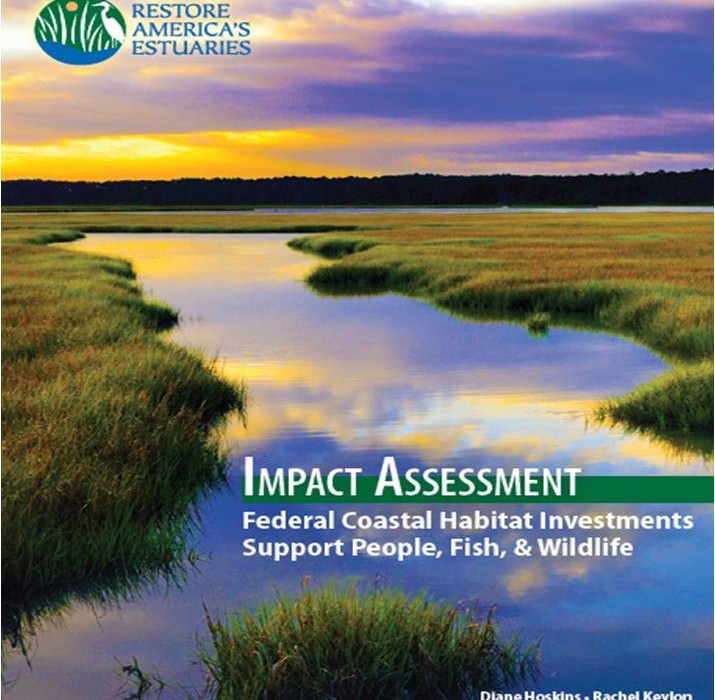Restore America’s Estuaries has released a new report: “Impact Assessment: Federal Coastal Habitat Investments Support People, Fish, and Wildlife”. It highlights the positive impacts that coastal habitat restoration efforts provide for job creation, tourism, fishery production, recreation, community protection, and human health.
“Coastal communities rely on healthy coastal habitat because it creates tourism opportunities, supports clean air and water, protects communities from extreme weather, and supports commercial and recreational fisheries,” said Jeff Benoit, President and CEO of Restore America’s Estuaries. “The real-world project examples demonstrate how federal investments in coastal habitat restoration deliver a broad range of public benefits: job creation, tourism, fishery production, recreation, community protection, and human health.”
The report documents how federal investments are having a big impact for people, fish, and wildlife by bringing abstract budget line items to life through a series of nine real-world case studies across the coast. The geographically dispersed case studies present project summaries, partners, benefits, and results for the following on-the-ground projects:
- Liberty Bay Oyster Restoration, WA: Restoration project results in water quality improvements and will enable a local tribe to restore a traditional food source;
- San Diego Bay Salt Marsh Restoration, CA: Restoration created 130 jobs and added $13.4 million to the local economy, and established a new tourist destination along the San Diego Bayshore Bikeway;
- Bay Harbor, Galveston Bay Restoration, TX: A motivated community association rallied interest and resources to transform dredge material into habitat for birds, fish, and wildlife, resulting in increased rental activity and recreation opportunities;
- Mobile Bay Restoration, AL: Project employed 20 out-of-work fisherman to create new habitat for commercially and recreationally-important fish and shellfish;
- Hatteras Harbor Living Shoreline Restoration, NC: New habitat for fish, shellfish, and wildlife also creates a buffer to absorb wave energy, providing protection for the adjacent community;
- Choptank River Oyster Reef Restoration, MD: Project brought together nontraditional partners to create a new recreational fishery;
- Delaware Bay Horseshoe Crab Beach Restoration, NJ: Beach restoration after Hurricane Sandy enabled continued horseshoe crab spawning after the storm, supporting public health and allowing the annual $11 million ecotourism spectacle to continue;
- Saw Mill River Daylighting in Yonkers, NY: Project resulted in total neighborhood revitalization, created hundreds of jobs, and major local economic development;
- Stony Brook River Restoration, MA: The restored the natural system supports record numbers of river herring and will continue to support the tourism industry and provide local economic benefits.
To supplement the case studies, the report includes a comprehensive inventory of federal programs that can provide assistance and financial support for coastal habitat restoration. Not all programs included presently make substantial investments in coastal habitat restoration, but coastal habitat restoration is an eligible activity for all federal programs listed.
The listing of programs provides a new resource for practitioners interested in developing new partnerships with federal programs. Further, the inventory provides an excellent resource for policy makers interested in considering options for increasing public investments in coastal habitat restoration.
The annual amount of public funding to support coastal habitat restoration remains far behind the national need and the report helps document further the tremendous values and multiple benefits that coastal habitat restoration provides.

